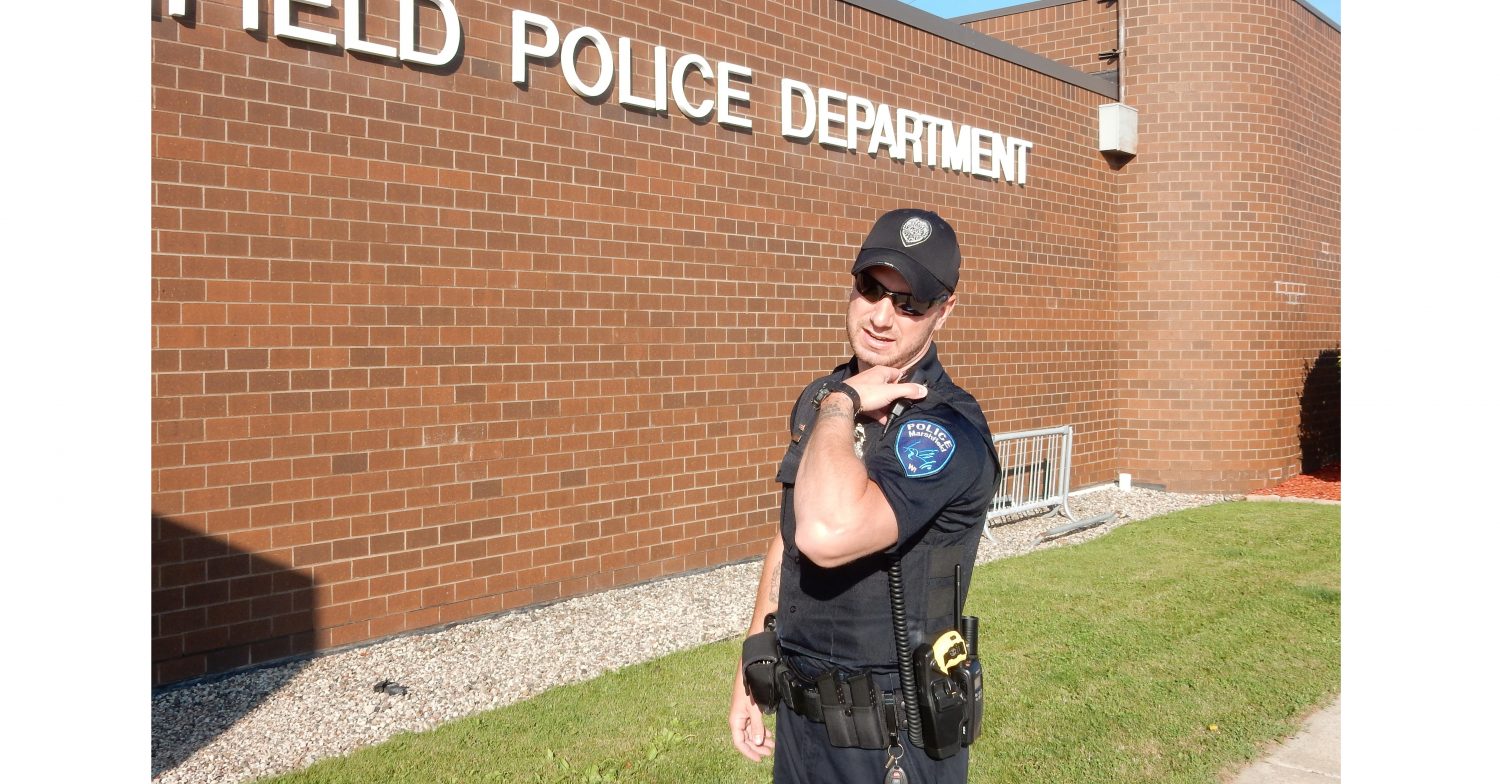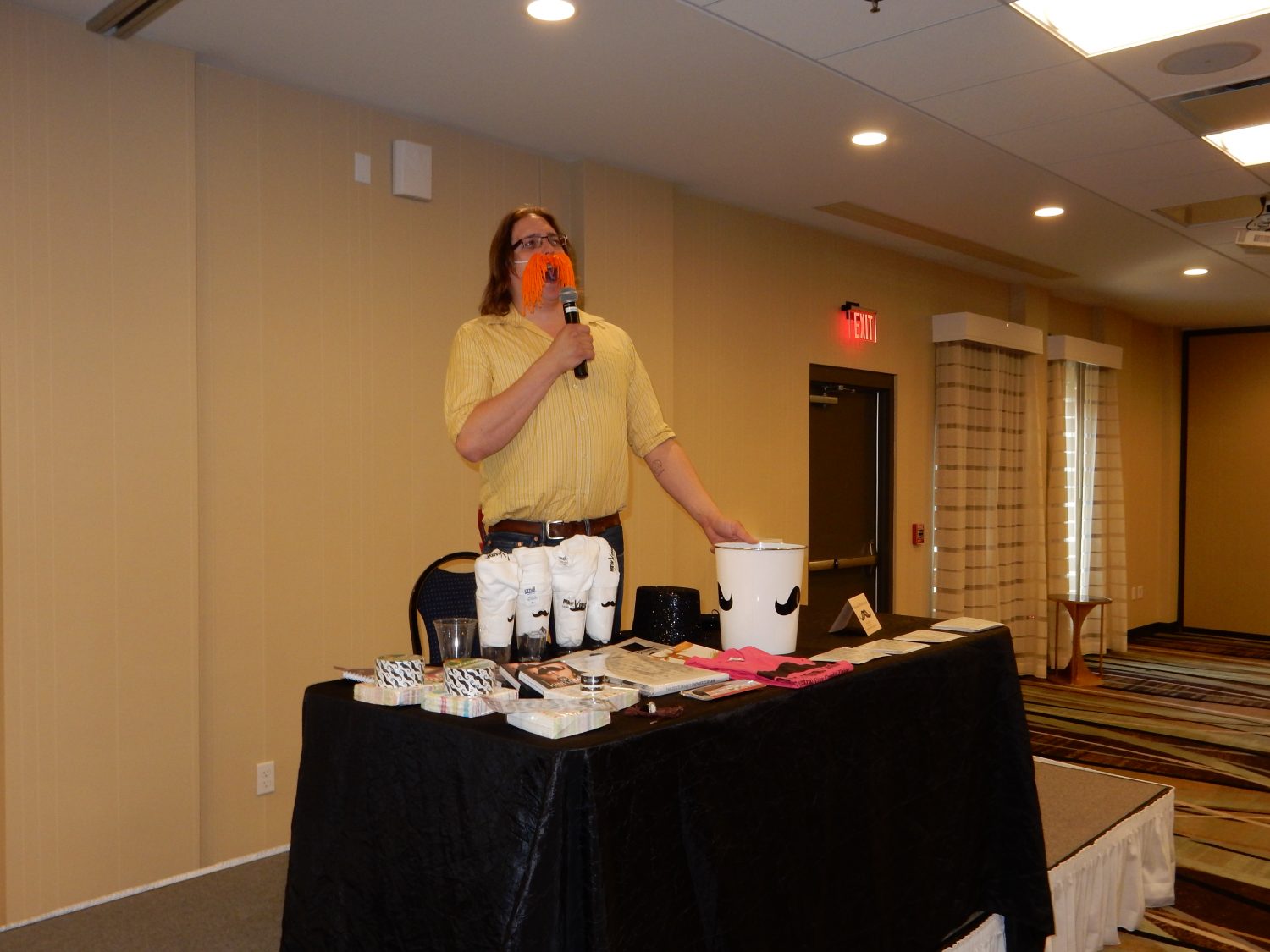Communication issues: Marshfield police face radio system difficulties

By Adam Hocking
Editor
MARSHFIELD — Issues with the Marshfield Police Department’s (MPD) radio communication system are causing problems for officers as they patrol different parts of the city. Specifically, the department’s current radios have trouble penetrating thick walls like those at big box stores such as Walmart or Target and the medical complexes of Marshfield Clinic and Saint Joseph’s Hospital.
The radios also struggle to function adequately between areas of low and high elevation in the city. If an officer is at a high elevation and needs to communicate with dispatch or an officer at a lower elevation, there are issues with the clarity of the communication.
A central cause of the issue, said MPD’s Administrative Lieutenant Darren Larson, is the Federal Communications Commission narrowbanding mandate, which, according to the Public Safety and Homeland Security Bureau, effectively required that, “All public safety and business industrial land mobile radio systems operating in the 150-512 MHz radio bands must cease operating using 25 kHz efficiency technology and begin operating using at least 12.5 kHz efficiency technology,” on or before Jan. 1, 2013.
What that meant for MPD, said Larson, was a reduction in the bandwidth that the department had to work with, which hurt its radio communication abilities. The FCC made the move to reduce the congestion of existing bands and free up bandwidth for new entities.
Larson said that there could be another bandwidth reduction coming in 2018. When police replaced their radios to adhere to the FCC narrowbanding requirement in 2012, they used grant money from the Office of Justice Assistance to pay for the transition, which Larson said cost about $120,000. The effect of narrowbanding has been a 20-25 percent reduction in the distance that officers are able to communicate with their radios, and Larson said some claim the reduction has been more significant than that. If there is further narrowbanding, the radios the department purchased to comply with the first reduction in bandwidth will still work but could experience more issues, Larson said.
“We’ve learned through the migration of this technology where these radios — through trial and error — work and where they don’t,” Larson said. He said that if for instance an officer is trying to communicate with another and they are in areas of significantly different elevations, the communication ability would be “limited” or “spotty.”
Larson noted that the problem is biggest with the department’s portable radios, which an officer would have on his or her person, and less with mobile radios that are located in a squad car because the mobile radios have greater wattage and are hooked up to their power source at all times.
“In their squad it’s less of an issue. They can communicate when they’re in the squad, but the problematic areas or occasions are when the officer is out of the squad, … doesn’t have a mobile available, so you’ve got to resort to your portable, and the range is not there,” Larson said. “It’s all about power. The mobile has its battery, its charging system … in the car.”
A possible solution to the problem, at least in terms of communicating from inside of thick-walled facilities, would be to implement a cross band repeater system. This would involve utilizing radios that are Ultra High Frequency (UHF), unlike the current department radios that are Very High Frequency (VHF). Larson said UHF radios would have a greater ability to penetrate thick walls, but they also do not have the range that VHF radios have. The cross band repeater system would capture the UHF signal that is transmitted from inside one of these buildings and convert it to VHF so that the signal could travel farther.
Larson said the department has tested UHF technology and a cross band repeater system and that it works.
Larson said transitioning to this cross band repeater system could cost in the neighborhood of $50,000-$70,000 and that it might only be a short-term solution, especially if bandwidth is further reduced in the future. Another possibility, and one that would be prohibitively more expensive, would be to transition the department’s communication system to digital communication.
The Marshfield Fire Department has made the change to incorporate UHF radios in addition to their VHF radios to circumvent the problem of not being able to communicate through thick walls. The fire department purchased UHF radios in 2014, said Fire Chief Bob Haight.
Larson said that the communication issue does not only impact police officer safety.
“While the officers, their safety is of significant concern, … it impacts the citizens of Marshfield because if the officers that they are calling for to come and help them out in a critical situation aren’t able to communicate effectively, I mean then we’re impacting many. It goes beyond just our ability to communicate to each other. It leads to a much larger problem, which is do we have a system that is going to be able to function properly in a crisis?” Larson said.
Larson said that through studies and trial and error the department has been able to map out the area where they have the most difficulty communicating and that when necessary officers can use their cell phones to communicate if the radios do not function properly.
“It’s not as though we’re not able to communicate. It’s just maybe not in many cases the most efficient means of communication,” Larson said. He added that in a crisis situation communication is vital.
“When we do scenarios like drills and tests to see how we respond to critical events, almost always communication breakdown is — in the after action report — an issue, almost always. It’s either the inability to communicate with partners that are coming to the scene or to fully communicate what everybody is doing,” Larson said.
Larson added that this issue is the source of serious concern for him.
“It keeps you up at night sometimes. When you’re sitting there and you’re thinking, ‘OK, are we doing the right things for the right reasons?’” Larson said. “Those are challenges, but you know that’s part of our role is to make sure that we use some critical thinking in how we will respond to events and learn from some things that we have encountered and adapt and make whatever change is necessary.”
The radio issue is tentatively scheduled to be brought before the Marshfield Common Council on July 28. City Administrator Steve Barg said that the meeting would involve a presentation by the city’s emergency management staff discussing the matter and would allow for questions from the mayor and council but that there would be no definitive action at that meeting.
Leave a reply
You must be logged in to post a comment.






